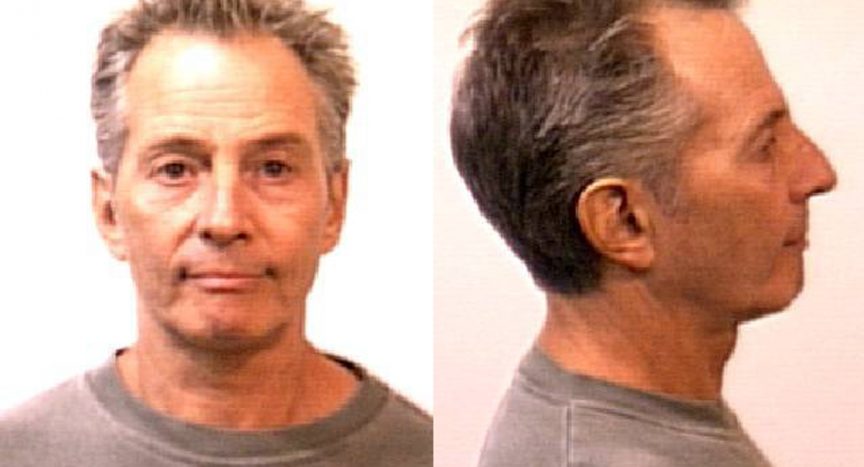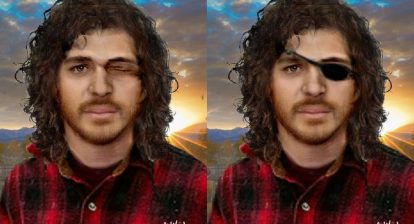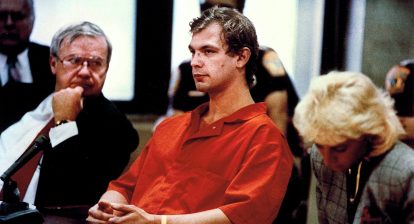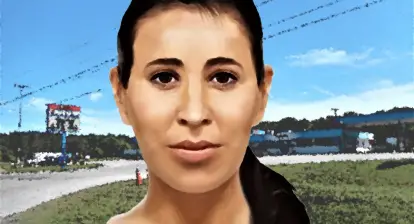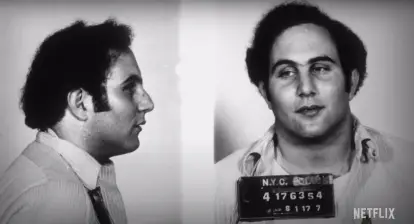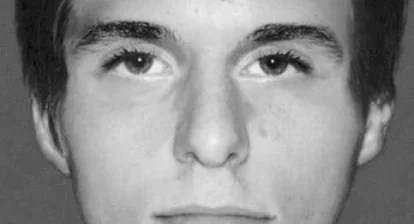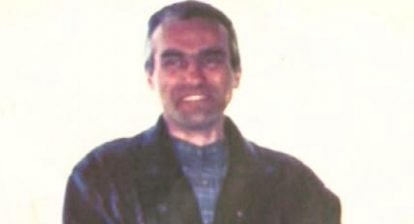Late real estate baron Robert Durst was under a veil of suspicion beginning with the 1982 disappearance of his first wife, Kathleen “Kathie” McCormack. The couple’s 9-year marriage was, according to most accounts, tumultuous at best. Kathie’s family and friends almost immediately grew suspicious of Durst for his numerous inconsistencies, outright lies regarding his whereabouts on the night of his wife’s disappearance, and his confession to The Jinx director, Andrew Jarecki, that he physically abused Kathie on a regular basis. Despite all these suspicious circumstances, without any physical evidence linking Durst to Kathie’s disappearance, the case against him was ultimately dropped.
Robert Durst Seems to Leave a Trail of Bodies in His Wake
Durst was once again on the radar of law enforcement following the murder of his longtime friend, Susan Berman, in 2000. Susan, an author, was known for being overly protective of Durst and even took it upon herself to act as his media spokesperson. L.A. investigators believe Susan may have aided him by pretending to be Kathie on a phone call to the Albert Einstein School of Medicine, where Kathie attended, thus creating a false alibi for her husband.
Shortly after the Westchester County investigators reopened Kathie’s case, Susan agreed to talk and was scheduled to speak with them accordingly. However, just days before this scheduled meeting, Susan Berman was found in her Benedict Canyon home fatally shot in the back of the head. Days later, the Beverly Hills Police Department received a handwritten letter which informed them of a “cadaver” at Berman’s address. Berman biographer Cathy Scott has theorized that Durst killed Berman because she knew too much about his wife’s disappearance and was about to spill the beans.
Shortly after Berman’s murder, Durst went into hiding and moved to Galveston, Texas, occasionally disguising himself as a woman and spending most of his time in a $300 a month apartment to avoid detection. He had told the landlord that he was renting the home for “his mute sister-in-law” and provided the name of one of his childhood classmates, Dorothy Ciner. Durst was seen in his “Dorothy Ciner disguise” — which consisted of a cheap wig and old, unflattering clothes–at the local library and restaurants.
On September 30th, 2001, the dismembered body of Durst’s neighbor, 71-year-old Morris Black, was found floating in Galveston Bay. Durst admitted to using a paring knife, two saws, and an ax to cut up Black’s body, though insisted throughout his utter spectacle of a trial that Black’s death was a result of self defense. Miraculously, a jury later acquitted Robert Durst.
Did You Know? Wicked Horror TV Has Classic and Independent Horror Films Available to Stream for Free!
Rather than keeping a low profile Durst openly went to see the film, All Good Things, which was inspired by his life. He later called the director, Andrew Jarecki, professed admiration for the project and offered to be interviewed. He would go on to sit with Jarecki for more than 20 hours over several years, despite having never previously cooperated with any journalist.
In early 2015 the documentary series The Jinx: The Life and Deaths of Robert Durst debuted on HBO and examined the reclusive millionaire at the heart of three killings spanning four decades. In April 2019, during the early stages of Durst’s trial, the final episode was released and included a scene of Jarecki confronting Durst with handwriting samples–the “key new evidence” leading to the later filing of murder charges–and the transcript of an audio recording that was captured on a microphone, which was still recording unbeknownst to Durst, he was wearing while in the bathroom. The filmmakers said they didn’t discover the audio until years after it was recorded. The documentary, including all the unseen footage, has since been turned over to the L.A. prosecutor’s office and is currently being used as evidence.
The transcript’s complete remarks were as follows: “[Unintelligible] I don’t know what you expected to get. I don’t know what’s in the house. Oh, I want this. Killed them all, of course. [Unintelligible] I want to do something new. There’s nothing new about that. [Inaudible — possibly “disaster.”] He was right. I was wrong. The burping. I’m having difficulty with the question. What the hell did I do!?”
Despite the mountain of evidence against him in all three killings, Robert Durst has refused to take any accountability or even acknowledge the “coincidences” surrounding the three–potentially five!–deaths he’s found himself at the center of, over the years. Instead, he has taken on the tactic of denials, distortions, half truths, and victim blaming to avoid answering for his alleged actions. With Durst’s alleged crimes back in the news by way of season two of The Jinx, let’s take advantage of the publicity to highlight the lives this meek, bizarre little man is suspected of stealing.
Lynne Kathryn Schulze May Have Been Robert Durst’s First Victim
In 2015, shortly after his arrest for the murder of Susan Berman, authorities announced they were looking at Robert Durst as a possible suspect in the 1971 disappearance of 18-year-old Lynne Schulze. Lynne was born on February 9th, 1953 and grew up in Simsbury, Connecticut in a close-knit family that consisted of her parents and four siblings (two sisters and two brothers). As a child Lynne was described as “…full of life and curiosity, and very eager to explore and experience things.”
In high school Lynne was a friendly, well liked overachiever who consistently earned high marks. By 1971 she was attending and living at the Middlebury College campus in Middlebury, Vermont. While she wasn’t earning the best grades, Lynne wasn’t failing any of her courses either, and she remained quite the social butterfly. At Middlebury Lynne developed a close circle of friends. She hiked local scenic sites as a member of the Middlebury College Outdoor Club. She also enjoyed cycling, downhill skiing, the whittling class she took at the Vermont Craft Center in Frog Hollow and window shopping; Lynne was a frequent visitor at the Vermont Book Shop and the nick-knack shop Little Wings. Elsewhere, “Lynne did a fair amount of traveling outside of Middlebury during weekends, in order to be with high school friends who, like her, had matriculated to various New England colleges.”
Lynne loved writing and penned letters home to her family often. In late November of 1971, she expressed feelings of homesickness and stress regarding two of her classes; one of which was an English Drama class that had a final exam coming up. On the day of the test, December 10th, 1971, Lynne visited the health food store All Good Things, which Robert Durst had coincidentally operated with his wife Kathleen, from 1971 to 1972. This occurs around 12:30pm. By 12:50 pm, Lynne is seen by a friend and fellow student back in her dorm looking for her favorite pen; her final exam was set to start at 1pm. Lynne never arrived to take the exam. The last accurate sighting of Lynne Schulze was at 2:15 pm that day, at a bus stop on Court Street eating dried prunes that she had purchased after visiting All Good Things for a second time.
There were several possible sightings of Lynne after her disappearance, but none of them were ever confirmed. Several people made confessions of involvement in her case, but all of their statements turned out to be false. Little evidence is available as to her fate, but Lynne’s disappearance is considered suspicious and her family believes she died shortly after she was last seen. Both of Lynne’s parents died in the 1990s but her sisters are still alive and hope for a resolution in her disappearance. “Our main purpose is to keep our sister’s name and story alive,” Anne Schulze told the Addison County Independent. “A big piece of this is to encourage anyone who might have information — even a vague recollection — to share it with Middlebury police.”
If you have any information regarding the disappearance of Lynne Schulze, you are encouraged to contact the Middlebury Police Department at 802-388-3191.

Kathleen “Kathie” McCormack is Another Suspected Durst Victim
Pretty much everyone in Kathleen McCormack’s life referred to her as Kathie. Born June 15, 1952, Kathie was the baby of the family and was absolutely doted on by both her parents and her siblings; Carol, James, Virginia and Mary. The family grew up in New Hyde Park on Long Island, a modest commuter town in New York. They were highly religious and incredibly close, gathering “for Sunday dinners of pot roast and mashed potatoes, with the children divvying up responsibility for washing the dishes, drying them, and putting them away.” In 1966, the McCormack children were devastated by their father’s diagnoses of colon cancer, though they still managed to band together to help take care of him. When James McCormack, 56, died the following year, Kathie was only 14-years-old. Kathie’s mother, Anne, described her youngest child as “spunky and prone to more impulsive — bordering on rebellious — behavior after her father died. Despite that Kathie continued to do well in school, earning good grades, and becoming a member of the National Honor Society. She even got a part time job at the Roosevelt Field shopping mall to help contribute to the family bills. Kathie was also a great cook and talented seamstress. As her friend and classmate Cheryl Catranbone told Crime Story, “She was always very open, happy, confident and accomplished… I could watch her sit down with Vogue magazine, admiring a dress. She’d walk out, buy the material and make it. No pattern.”
Kathie graduated from New Hyde Park Memorial High School in 1970 and almost immediately moved to Manhattan where she worked as a dental assistant in the famed Plaza Hotel, while occasionally picking up extra money working at Saks Fifth Avenue. In the fall of 1970 Kathie met Robert Durst while she was living in an apartment building owned by his family. They were married on his birthday in 1972 and moved to Vermont, where they owned and ran All Good Things. Kathie was not shy about the fact she wanted children, particularly a big family like the one she was raised in. But Robert did not. This was just one of the many issues that would plague their marriage. Sometime in 1973 or 1974 Robert was, according to him, pressured by his father to sell the store and return to New York to work for the family business. Kathleen graduated from the nursing program at Western Connecticut State University in 1978, then enrolled in the Einstein College Of Medicine. “She was excited to be a medical student,” her former classmate, Dr. Alicia Landman-Reiner remembered, “She worked very hard. She always took a seat in the front row and took notes.” Likewise, “She was only three months shy from becoming a doctor and she never would have given that up,” her brother Jim McCormack said in 2001. He added, “She knew she wanted to be a healer. She loved helping people.”
Kathie was 29-years-old and just three months away from finishing medical school when she was last seen on January 31st, 1982. Her husband claims he dropped her off at a train station in South Salem, New York — headed for Manhattan — and never saw her again. She wanted to become a pediatrician.
If you have any information about the disappearance of Kathie, please contact the New York Police Department at 646-610-6914.

Kristen Deborah Modafferi Was, at One Point, Beloved to be a Robert Durst Victim
While he was at one point considered a suspect, authorities now do not believe Robert Durst was involved in the 1997 disappearance of 18-year-old Kristen Modafferi. Regardless, Kristen’s case remains open and unsolved and her voice still deserves to be heard. Kristen’s disappearance has been, arguably, one of the Bay Area’s biggest mysterious in the last three decades. Growing up, Kristen was a bright girl who excelled at school from an early age — she even skipped a grade in elementary school. “She got straight As all through school and a nearly perfect score on her SATs. When she graduated from Providence High School in 1996, she was awarded a Park Scholarship, which covered her tuition for four years. Only the brightest and best students were selected to be Park Scholars, and Kristen thrived in the program. She was an industrial design major and achieved straight As during her first two semesters at the University,” according to Medium. The Modafferi family vacationed quite a bit and Kristen quickly developed a strong desire to travel, so her parents were not surprised by her excitement about a high school trip that would take her to Russia for a chunk of the summer. After completing her freshman year at North Carolina State University, Kristen convinced her parents to let her enroll in the University of California at Berkeley for a summer photography class.
Quickly after her arrival in California, Kristen took a part time job at Spinelli’s coffee shop (now called Tully’s Coffee) at the Crocker Galleria Mall and a weekend job at Cafe Musee in the San Francisco Museum of Modern Art, to help pay her expenses, which included rent. She was reportedly eager to show her parents she could support herself. Kristen lived with a roommate on Jayne Avenue in Oakland, California at the time, and was also taking a dance class. Kristen was last seen by her co-workers on June 23rd, 1997, the day before her photography course was set to start. During her shift she asked one of them for directions to Baker Beach, which is next to Land’s End Beach. Kristen had clocked out at 3pm but was seen 45 minutes later on the second floor of the mall, walking alongside a blonde woman carrying a backpack. This blonde woman has never been identified. Modafferi’s personal belongings were searched and a newspaper personal advertisement from the San Francisco area was among her possessions. The advertisement contained the following message: ‘FRIENDS: Female seeking friends to share activities, who enjoy music, photography, working out, walks, coffee, or simply the beach, exploring the Bay area! Interested, call me.’ It is unknown if Modafferi placed the advertisement herself or if she answered the ad. All records from June 1997 have since been destroyed at the newspaper’s office. It is also unclear if the advertisement is related to her disappearance.
If you have any information concerning Kristen’s case, please contact the Oakland Police Department at 510-238-3641 or FBI-San Francisco Field Office
at 415-553-7400. Her NCIC number is M-038421722.

Durst Remains a Person of Interest in the Disappearance of Karen Marie Mitchell
Investigators have looked into the possibility that Robert Durst was in the Eureka area at the time of 16-year-old Karen Mitchell’s disappearance. While he hasn’t been charged with anything, authorities have been unable to rule him out as a suspect. Karen Mitchell’s parents divorced shortly after her birth in 1980 and her mother, Mary Casper, was left to raise Karen and her older brother, James, alone. For years, the three bounced around Orange County, California, close to Mary’s large extended family. As a small child, Karen was the shy one while James was considered more gregarious. But, by 13, Karen was a feisty, argumentative and stubbornly independent teenager who was passionate about the environment and hated getting her photo taken. “She probably is pretty pissed,” Mary Casper told The Guardian, referring to the numerous websites featuring collages of Karen’s pictures such as The Charley Project. In 1993, Karen decided to move in with her aunt and uncle and their five children in Eureka, California. According to The Guardian, “She was the kind of girl who owned a worm farm, who was evangelical about composting. She did not care about clothes and rarely wore makeup; her uniform was jeans and a t-shirt and occasionally, a hemp necklace. She liked the Smashing Pumpkins and REM.”
Karen was a good student and within a semester of graduating high school, by the time of her disappearance, she planned to attend Humboldt State University and possibly study law or political science. She was last seen on November 25th, just five days before her 17th birthday, in 1997. During this time Karen was on vacation from school and was working that afternoon at the Coastal Family Development Center. After her shift she made the one mile journey to the Bayshore Mall where her aunt owned a shoe store. She briefly visited it before departing from the mall at approximately 2:45 p.m. Karen was last seen walking towards West Sonoma Street shortly afterwards. She has never been heard from again. A witness later stated that Karen may have entered an unidentified light blue four-door 1976 to 1978 sedan, which was possibly a Ford Grenada, a Mercury Monarch, or a Nissan. The vehicle had California license plates and “Eureka” imprinted on the rear plate’s frame. And a composite sketch (below) of the driver bears a striking resemblance to Robert Durst, who had apparently visited the shoe shop several times in 1998, months after Karen’s disappearance.

If you have any information concerning Karen’s case, please contact the Eureka Police Department at 707-441-4044 or Investigator Mike Hislop at the Humboldt County District Attorney’s Office at 707-441-4044.

Susan Berman Was a Staunch Defender of Robert Durst and That May Have Played a Role in Her Demise
Robert Durst’s family may have owned New York at one time but Susan Berman’s family helped build Las Vegas. Susan Berman was, unbeknownst to her, born into “mob royalty” in May of 1945. She was the only child to Betty Ewald, a traveling dancer who had adopted the stage name “Gladys Evans,” and Dave Berman, a central figure in the mob who replaced Bugsy Siegel in Las Vegas at the Flamingo Hotel after Siegel’s 1947 murder. Susan grew up privileged and absolutely adored by her parents, especially her father. The Berman family was so rich that Dave Berman was able to get Liberace and Elvis to preform at one of Susan’s childhood birthday parties. But in 1957, when she was only 12-years-old, Susan’s world was shattered when both of her parents died within weeks of each other. She would later claim that she believed their deaths were actually murders carried out by the mafia but there is no known evidence to this claim. Susan spent the rest of her childhood with her Uncle in California and would not learn of her father’s mob ties until her early twenties. The news affected her greatly — especially the mention of him being a trained killer who could apparently “kill a man with one hand behind his back”– though she would later embrace it to the point where she wrote extensively of her father. To friends she would proudly refer to herself as a ‘Mafia Princess’ and even proudly hung one of Dave Berman’s mugshots in her home.
In the late 1960s, at UCLA, Susan met and became fast friends with fellow student Robert Durst. The two remained close after graduation and were considered each other’s best friends. Durst even walked Susan down the aisle at her wedding in 1984. By December of 2000 Susan was an accomplished writer of six books and numerous features in dozens of magazines. But she was experiencing a bit of money trouble. Susan’s friends recalled that she would often exaggerate details when telling stories or would outright lie. But they still remember her as a fun loving, deeply religious woman who was generous to a fault and wore her heart on her sleeve. “Susan loved mysteries.” her adopted son, Sareb Kaufman, recalled of his mother. He added, “She even wrote a few. She would’ve loved this one.” Robert Durst stood trail and was found guilty of murdering his longtime friend on September 17th, 2021.

Durst Stood Trial but Was Acquitted in the Murder of Morris Black
Little is readily available on 71-year-old Morris Julius Black. Morris was born in Malden, Massachusetts on October 21st, 1929. He was one of at least three siblings born to Fannie and Samuel Black. Some reports claim Fannie and Samuel were mentally unwell and this may have resulted in domestic abuse towards the children — abuse Morris allegedly participated in. Either way, by the year 2000 Morris was apparently not close with any of his family. He was described as a “crabby old man with a foul temper,” who stood out for this thick Boston accent and for swearing like a sailor. Morris was also considered to be cheap. In October of 1997 Morris was arrested after threatening to detonate a bomb in a local utility company because he claimed he was overcharged $50. While he had no visible means of income, after his death, investigators found nine separate bank accounts in Morris’ name that contained approximately $137,000. Many have theorized that this money may have been given to Morris by Robert Durst, his neighbor in Galveston, either as a bribe for withholding incriminating information on Durst or for potentially aiding him in one or more of his alleged crimes. Durst stood trial for his murder but was infamously acquitted.

Research Sources:
Law & Crime Network: CA v. Robert Durst Murder Trial – Murder of Friend Susan Berman LIVE STREAM
The Jinx: The Life and Deaths of Robert Durst
A Deadly Secret: The Strange Disappearance of Kathie Durst by Matt Birkbeck
Without a Trace: Inside the Robert Durst Case by Marion Collins
Murder of a Mafia Daughter: The Life and Tragic Death of Susan Berman by Cathy Scott
Turn to Tara: The Robert and Kathie Durst Story
How did Robert Durst chop up a body and not get convicted for murder? by MATT PEARCE for the L.A. Times
Find a Grave
The Charley Project
Follow us on social media: Twitter and Facebook
Updated July 5, 2024
